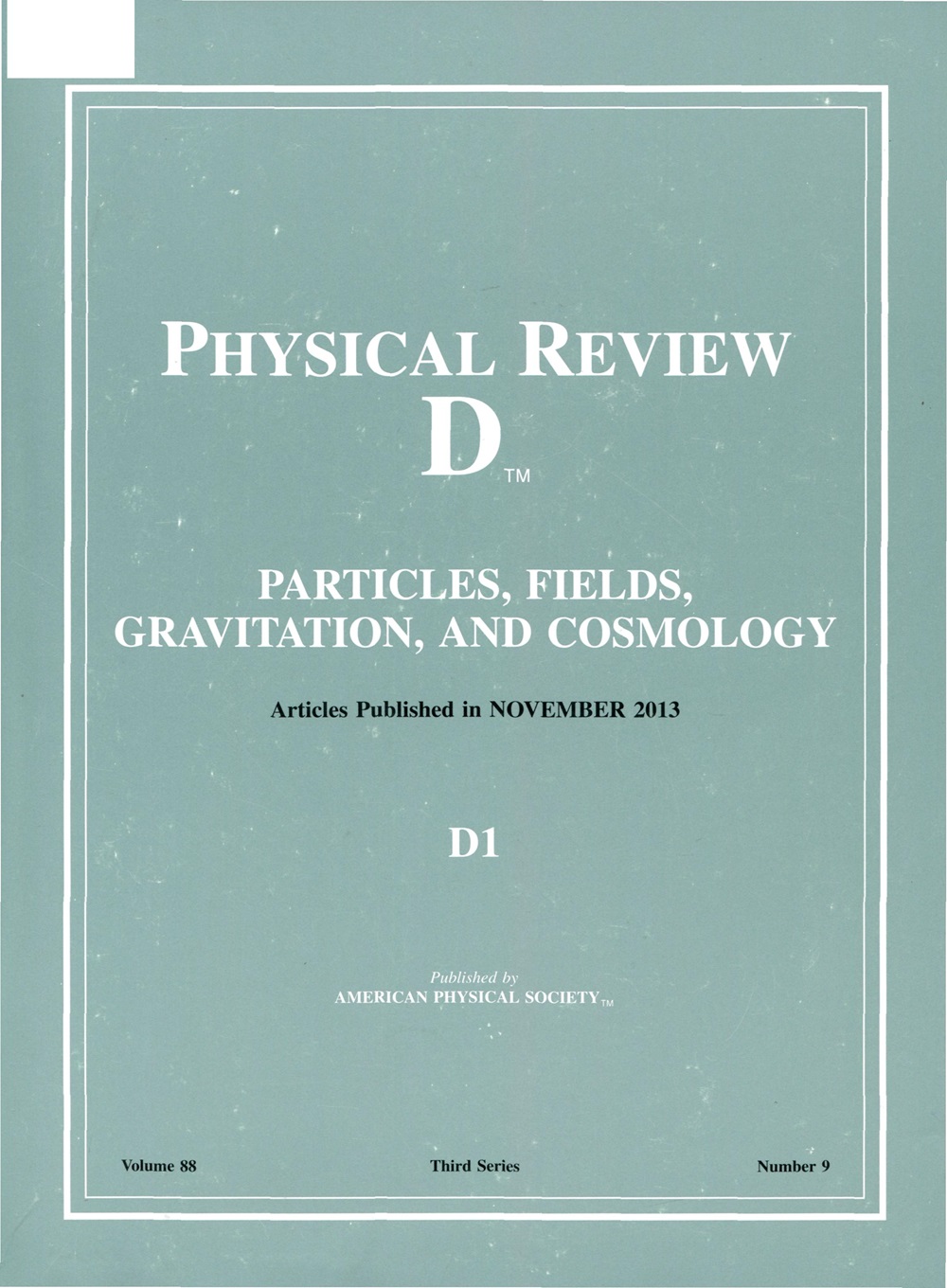具有不同拓扑电荷的孤子的量子能量
IF 5.3
2区 物理与天体物理
Q1 Physics and Astronomy
引用次数: 0
摘要
真空极化能是对经典孤子能量的主要量子修正。我们研究了一维空间中双分量孤子的这种能量作为孤子拓扑电荷的函数。我们发现经典极化能和真空极化能都是拓扑电荷的线性函数,有一个小的偏移。因为经典偏移量和量子偏移量的结合决定了结合能,所以根据模型参数的不同,所有高电荷孤子要么是能量束缚的,要么是不束缚的。即使在场结构与孤立孤子非常不同的情况下,这种线性仍然存在,并且仅从它们的束缚态光谱分析中无法明显看出。2025年由美国物理学会出版本文章由计算机程序翻译,如有差异,请以英文原文为准。
Quantum energies of solitons with different topological charges
The vacuum polarization energy is the leading quantum correction to the classical energy of a soliton. We study this energy for two-component solitons in one space dimension as a function of the soliton’s topological charge. We find that both the classical and the vacuum polarization energies are linear functions of the topological charge with a small offset. Because the combination of the classical and quantum offsets determines the binding energies, either all higher charge solitons are energetically bound or they are all unbound, depending on model parameters. This linearity persists even when the field configurations are very different from those of isolated solitons and would not be apparent from an analysis of their bound state spectra alone. Published by the American Physical Society 2025
求助全文
通过发布文献求助,成功后即可免费获取论文全文。
去求助
来源期刊

Physical Review D
物理-天文与天体物理
CiteScore
9.20
自引率
36.00%
发文量
0
审稿时长
2 months
期刊介绍:
Physical Review D (PRD) is a leading journal in elementary particle physics, field theory, gravitation, and cosmology and is one of the top-cited journals in high-energy physics.
PRD covers experimental and theoretical results in all aspects of particle physics, field theory, gravitation and cosmology, including:
Particle physics experiments,
Electroweak interactions,
Strong interactions,
Lattice field theories, lattice QCD,
Beyond the standard model physics,
Phenomenological aspects of field theory, general methods,
Gravity, cosmology, cosmic rays,
Astrophysics and astroparticle physics,
General relativity,
Formal aspects of field theory, field theory in curved space,
String theory, quantum gravity, gauge/gravity duality.
 求助内容:
求助内容: 应助结果提醒方式:
应助结果提醒方式:


